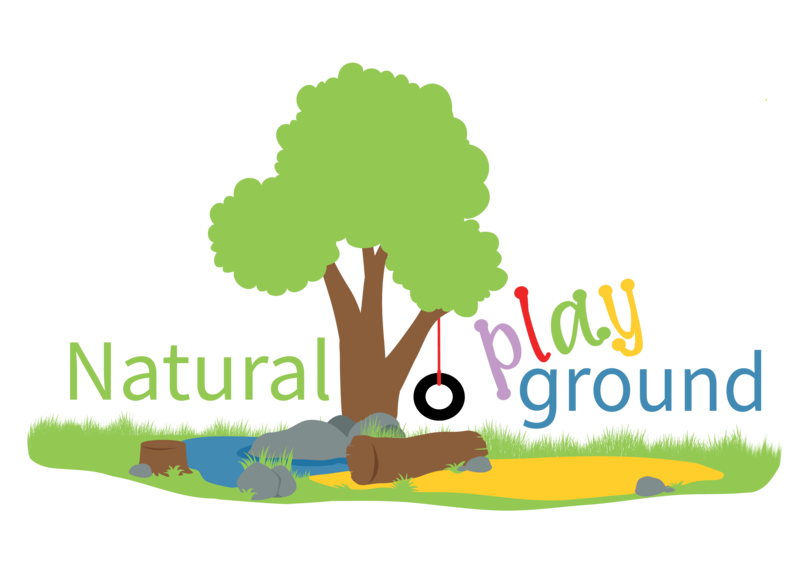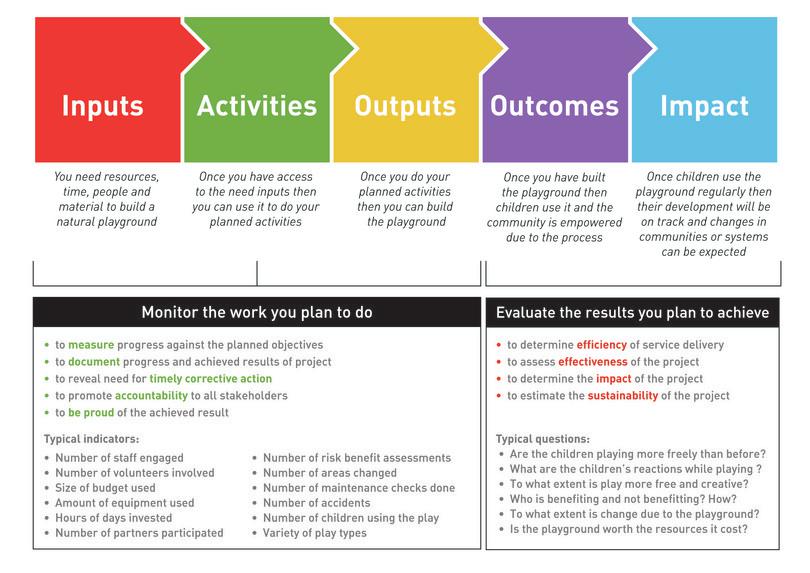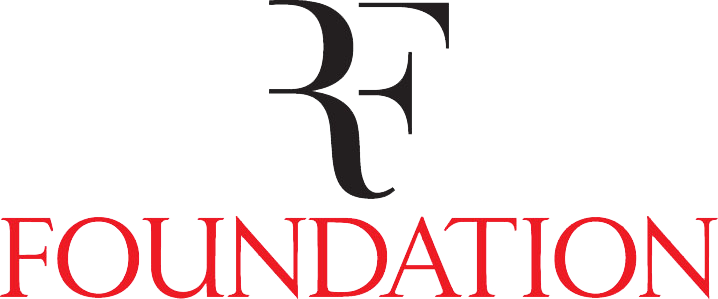Section 5 Monitor and Evaluate
What is monitoring and evaluation?
MonitoringMonitoring The systematic process of collecting, analysing and using information to track a programme’s progress toward reaching its objectives. and evaluationEvaluation The systematic process of collecting, analysing and using information to determine the impact of a project; is it making a difference? is an important part of every initiative and project as it allows you to track the progress of your initial idea and document results and success. It is also called outcome-based measurement.
Outcome-based measurement is a universal approach that strengthens accountability and encourages clarity about what your project is doing and what it is changing. Outcome-based measurements follow a logical chain of events that link resources to activities, activities to products or results, and results to outcomes and impact. Each step of the project process is linked with the next step, as demonstrated in Figure 16.
Monitoring and evaluation cannot be done at the end of a project, it needs to be designed as part of the chain of events when objectivesObjective A description of the thing that you plan to do or achieve. are formulated.
- Efficiency determines the extent to which human and material resources are well used. It tells us if the input is worth the output it achieves.
- Effectiveness assesses the extent to which a project achieves its objective. It tells us if the input is worth the output it achieves.
- Impact determines whether or not we are making a difference to the problem we are trying to solve. It tells us if the project is producing change.
- Sustainability estimates the extent to which changes are likely to continue after the project ends. It tells us if the changes are lasting.
How to approach monitoring and evaluation
Monitoring
Are we getting where we want to be?
In Section 1, we saw that play is important for early childhood development and that it offers many varied benefits to the child; in the short term but also and especially in the long term. The ultimate goal of our project is that we want to offer a play environment or space where children can develop the skills, habits and attitudes that they will need for the rest of their lives.
Monitoring and evaluating the project helps us to make sure we reach our goal of having a natural playgroundNatural Playground An area where kids can play with natural elements such as sand, water, wood, and living plants.. Good intentions are not enough. We want results that will lead to the achievement of our goal.
Once the children start using the natural playground, it is important to keep monitoring and evaluating on a regular basis to ensure that the playground is a safe and exciting play space. Use Tool 9 as a guide for monitoring the playground and Tool 10 to monitor that the playground stays inline with safety standards. Tool 11 helps to monitor that the playground is maintained so that the performance and safety of the equipment in your playground remains at a high standard.
We want to show that our project has made a real change in children’s lives and that any donations of money or resourcesResources A supply of money, materials, staff, volunteers, and other assets that can be used by the project to effectively achieve its aims. were not wasted. If there are places that children don’t use or like, we need to adapt and change it to keep on offering play opportunities that address the holistic developmental needs of the children. Tool 12 can be used to evaluate if there are opportunities that will have a positive impact on children’s development.
Evaluation
Monitoring is often about facts and figures, things you can count and see. It is relatively easy to do if you work in a systematic, organised manner.
When you evaluate you make judgements. You weigh the facts that you have analysed against a standard. Choose indicators of evaluation by considering your activities and outputs.
The standard that you use to judge or weigh, is determined by a combination of:
- theory and research,
- societal norms (including laws),
- practice experience (informed opinion),
- your personal beliefs, attitudes and views.
See Tool 12 for examples of the types of evaluations you can do.
Evaluation is a little more tricky than monitoring. It helps if you have experience in evaluating projects when you do it. If you do not have a person on your team that is familiar with identifying indicators for evaluating, try to get someone from your community or from a local NGO to assist you. On the upside, evaluations usually happen further apart than monitoring, generally every three to six months and at the end of a project.



